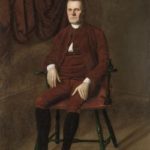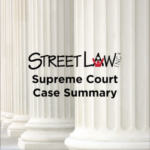The Nineteenth Amendment was first introduced to Congress in 1878. It took over four decades of pleas, protests, petitions and speeches to finally get it ratified. We’re told that the Nineteenth granted all women the right to vote in America — but this was not the case in practice. How did the divides in the suffrage movement define the fight for women’s enfranchisement? And how did that amendment finally get passed? With a stern note from someone’s mom.
Our guests are once again historians Martha Jones of John Hopkins University, Laura Free of Hobart and William Smith Colleges and Lisa Tetrault of Carnegie Mellon University.
This short episode includes a one-page Graphic Organizer for students to take notes on while listening, as well as discussion questions on the back side.
19th Amendment: Part 1 Podcast
The prominent figures and events of the women’s suffrage movement of the 19th and 20th centuries can feel almost mythical at times. That’s in part because they are, in fact, myths. The telling of the Nineteenth Amendment tends to stretch from a convention in Seneca Falls, New York, in 1848 to the amendment’s ratification in 1920, but the true story is a much longer one. We explore the myths and unveil the realities in part one of two episodes on the Nineteenth Amendment. Our guests are historians Martha Jones of John Hopkins University, Laura Free of Hobart and William Smith Colleges, and Lisa Tetrault of Carnegie Mellon University.
This short episode includes a one-page Graphic Organizer for students to take notes on while listening, as well as discussion questions on the back side.
The Bill of Rights
In this series of videos, students will hear from constitutional scholars such as Professor Tracey Meares of Yale University, Professor Orin Kerr of George Washington University, Dean Erwin Chemerinsky of Berkeley Law, and Michael McConnell, the director of the Stanford Constitutional Law Center. In these videos, two scholars discuss their interpretations of the amendments, often giving different points of view and interpretations.
From Suffragist Sashes to Antiwar Armbands
In a 19th Amendment video, produced by the Administrative Office of the U.S. Courts for use in classrooms, courtrooms, and the distance-learning space, an unlikely connection is made between two rights activists from different eras. Suffragette Virginia Minor and Vietnam war protester Mary Beth Tinker were separated by 100 years, but their passions came together in the legal history of the nation and of St. Louis, where they each worked through the courts to make social change. Both cases were decided – with different outcomes – by the Supreme Court of the United States.
The Constitution in Action – State Challenges to Federal Authority: The Kentucky and Virginia Resolutions
Students in this simulation, as Republican members of the Kentucky and Virginia legislatures in 1798 and 1799, consider how they will oppose the Alien and Sedition Acts. Students will then act as members of other state legislatures and consider how to respond to Kentucky and Virginia. By engaging in this historical moment, students will wrestle with the ongoing tension between the Article VI, Clause 2, of the Constitution, which establishes the federal government as the “supreme Law of the Land,” and the Tenth Amendment, which reserves powers “not delegated to the United States” to the states or the people.
Fisher v. University of Texas II (2016)
Act I: What Were the Various Plans at the Constitutional Convention?

This short video highlights the four plans discussed during the first two weeks of the Convention: Madison’s Virginia Plan; Sherman’s New Jersey Plan; Hamilton’s “monarchical” plan; and, finally, Madison’s amended Virginia Plan. Each plan attempted to reconcile the potential conflicts between a strong national government and strong state governments. Professor Gordon Lloyd notes that an inability to compromise resulted in a stalemate after the first two weeks.
Lesson Plan: How States Redistrict – The Case of 2022
This lesson plan explores the Congressional and state redistricting processes in several states, including Texas, Florida, Colorado, Montana, Oregon, North Carolina, Michigan, Pennsylvania, New York, California, Illinois, Ohio, and West Virginia. The lesson extends to the legislative, executive, and judicial processes as well as the geographic and demographic considerations of redistricting.
Starter Kit: Judicial Branch Podcast
The Supreme Court, considered by some to be the most powerful branch, had humble beginnings. How did it stop being, in the words of Alexander Hamilton, “”next to nothing?” Do politics affect the court’s decisions? And how do cases even get there?
This episode features Larry Robbins, lawyer and eighteen-time advocate in the Supreme Court, and Kathryn DePalo, professor at Florida International University and past president of the Florida Political Science Association.
This short episode includes a one-page Graphic Organizer for students to take notes on while listening, as well as discussion questions on the back side.
African American History Month Resources
African American History Month evolved from the birthdays of Abraham Lincoln and Frederick Douglass in the second week of February. Historian and author Dr. Carter G. Woodson framed the concept that became the first Negro History Week in February 1926. It developed into a monthlong commemoration of the struggles and triumphs of the African American community. On this page, learn the stories of Autherine Lucy Foster, the first African American student to attempt to integrate the University of Alabama; Frank M. Johnson, Jr., the federal judge who ruled in the Rosa Parks case; and Linda Brown, the 9-year-old who became the face of children caught in the crossfire of the fight for social change. The Pathways to the Bench video series features profiles of African American federal judges who offer perspectives on their experiences during the Civil Rights era.
